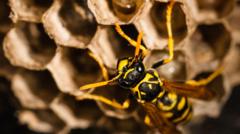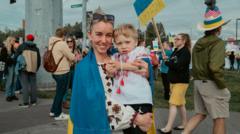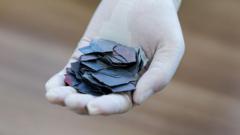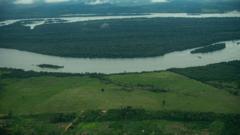The discovery of a radioactive wasp nest at a decommissioned US nuclear weapons site has caused a stir among environmental advocates and federal officials alike. Reports indicate that the nest, located at the Savannah River Site (SRS) near Aiken, South Carolina, exhibited radiation levels ten times the regulatory limit. On July 3, workers conducting routine inspections identified the nest, which was subsequently treated to eliminate the wasps and then sealed as radiological waste.
The US Department of Energy clarified that this incident does not stem from a leak of nuclear waste, assuring that there has been no environmental or public health impact as a result of the radiation. Investigators attribute the unusually high radiation levels in the nest to "onsite legacy radioactive contamination," a remnant of the site's history since its establishment in the 1950s for producing plutonium for nuclear weapons. Although the site is still operational, its focus has shifted to generating nuclear material for power plants.
Importantly, the wasps that inhabited the nest were found to have much lower radiation levels than the nest itself, as they typically stay within a short distance of their home. Despite these reassurances, the watchdog group Savannah River Site Watch expressed frustration over the lack of transparency regarding the source of the radioactive contamination. Spokesman Tom Clements voiced concerns that the government has not addressed whether there were any leaks from underground waste tanks—issues that have plagued the facility historically.
Having previously produced over 165 million gallons of liquid nuclear waste, the Savannah River Site has ongoing operations with 43 remaining waste tanks while eight have been closed. The recent finding of the radioactive wasp nest serves as a grim reminder of the site’s complex legacy and the continuing need for scrutiny and accountability regarding radioactive materials.
The US Department of Energy clarified that this incident does not stem from a leak of nuclear waste, assuring that there has been no environmental or public health impact as a result of the radiation. Investigators attribute the unusually high radiation levels in the nest to "onsite legacy radioactive contamination," a remnant of the site's history since its establishment in the 1950s for producing plutonium for nuclear weapons. Although the site is still operational, its focus has shifted to generating nuclear material for power plants.
Importantly, the wasps that inhabited the nest were found to have much lower radiation levels than the nest itself, as they typically stay within a short distance of their home. Despite these reassurances, the watchdog group Savannah River Site Watch expressed frustration over the lack of transparency regarding the source of the radioactive contamination. Spokesman Tom Clements voiced concerns that the government has not addressed whether there were any leaks from underground waste tanks—issues that have plagued the facility historically.
Having previously produced over 165 million gallons of liquid nuclear waste, the Savannah River Site has ongoing operations with 43 remaining waste tanks while eight have been closed. The recent finding of the radioactive wasp nest serves as a grim reminder of the site’s complex legacy and the continuing need for scrutiny and accountability regarding radioactive materials.





















